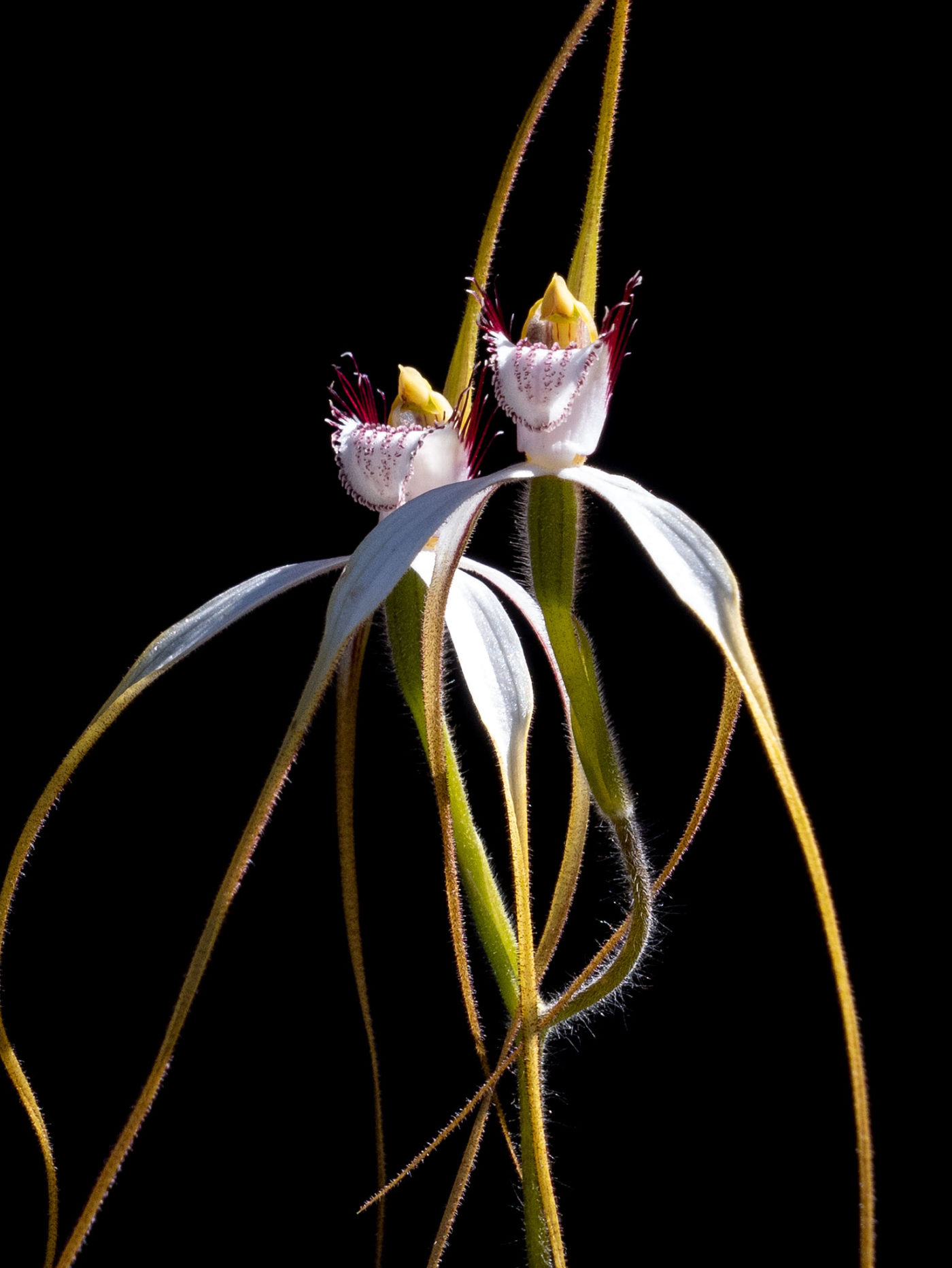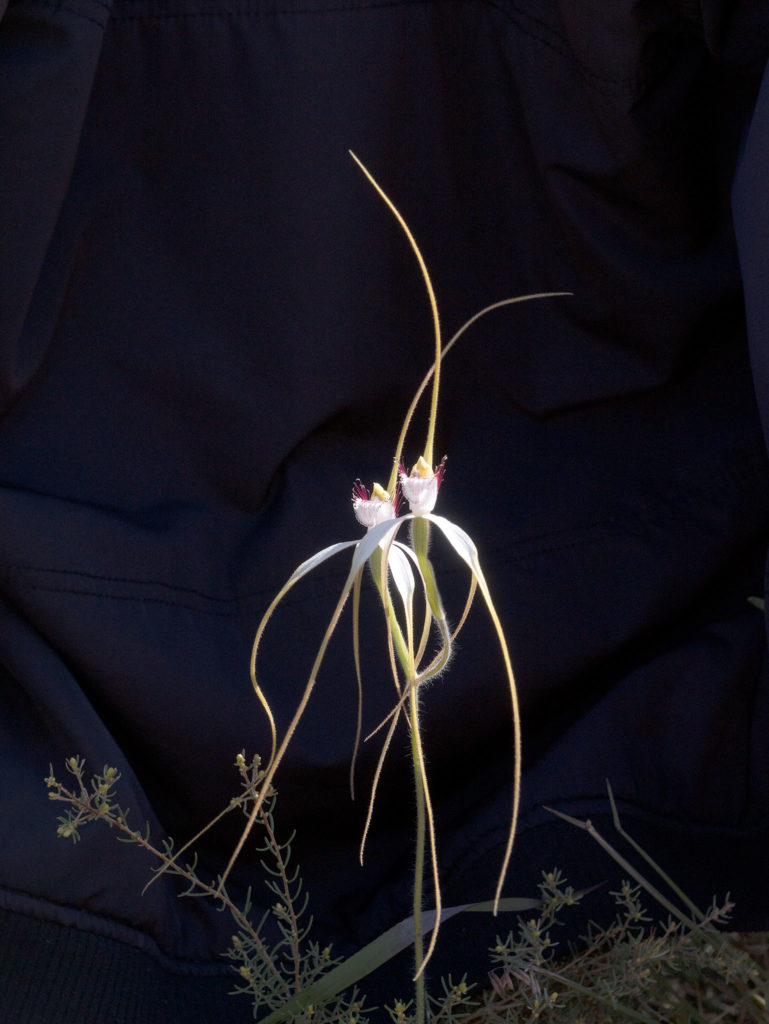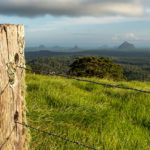Tip of the month: October 2022. A black background and a little creative thinking.

My recent Western Australia Wildflower tour was not quite like any other tour I have done. Most of my tours are about landscapes and wildlife, so flowers are usually not a feature. This is the first time I have really concentrated on photographing flowers for a long time, and it was a great reminder of some of the challenges. One challenge in particular, is busy/messy backgrounds that can be very distracting in a photo, especially when dealing with very delicate flowers like these Spider Orchids. This is especially problematic on sunny days, because stark highlights and shadows in the background become very distracting. At first, I wasn’t even going to photograph the white spider orchid above, because the background was just too distracting.
Then I noticed one of our group was wearing a black jacket. I asked him to hold his jacket behind the flowers, blocking out the background entirely.
With a white flower and a black background, it only took a bit of creative exposure in Manual Mode to create a great image. In order to prevent overexposing the white flower, I had to reduce the exposure a long way – ensuring that the black background would be completely underexposed.
In the uncropped photo below, I have brightened things up a bit so you clearly see the jacket. But for the finished version, all I had to do was reduce the shadows and increase the blacks in post-processing, and you can see the result (above).

It’s that third point – exaggerated perspective – that I want to take a closer look at for this tip. It’s really a consequence of point one and two. If the wide-angle lens makes things appear smaller, then you can get very close to a big object and still fit it in the shot. Meanwhile objects in the distance will still appear much further away. This can result in a photo that gives much greater prominence to the foreground object – simply because you can make it appear very large, while making everything in the distance smaller.
The extra depth of field means that you can also keep both foreground and background relatively sharp. So viewers can see detail in both the foreground and background, but the eye will always be drawn to the foreground first due to that exaggerated prominence. So as a creative photographer you can effectively tell the viewer where to start…and then lead them where you want them to go.
Taking that idea further, if you can introduce a leading line (curved or diagonal lines work really well) you can really add to the three-dimensional quality of your photo. Think of it like a story. Your eye-catching foreground grabs the viewer’s attention, the lines lead you through the storyline, and the background feature becomes the full-stop at the end of the sentence.
Comments are closed.



